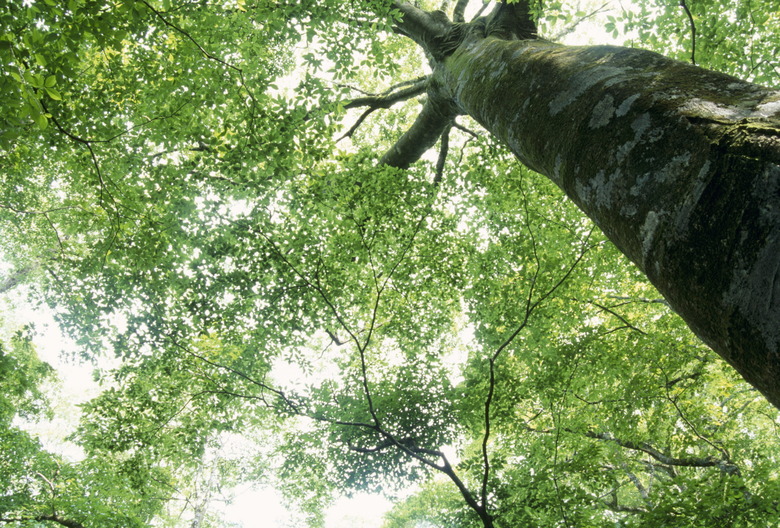What Would Cause A White Foam Discharge From The Side Of A Tree?
The white bubbles ooze down the tree's trunk, foaming like dishwashing liquid mixed with water. Whether the foam is made up of real bubbles or an optical illusion, you are right to be concerned about your tree's health. There are several reasons why a tree may produce foam and most are not good.
Foamy Canker
There are several bacteria associated with this condition, also called alcoholic flux, including Zymomonas bacteria. The white foaming bubbles emerging from a break in the bark smell like fermenting yeast or alcohol. While small infections may be treated by pruning infected branches and removing small areas of bark, there is no cure. To prevent infecting healthy tissues, disinfect all pruning tools with a mixture of equal parts alcohol and water. Remove severely damaged trees. You can reduce the tree's stress and increase its resistance to bacteria by providing water once or twice weekly during the dry season, at a rate of 10 gallons for every inch of the trunk's diameter.
A Slimy Mess
A rancid stench combined with a wet or foaming mess on the tree's trunk may indicate slime flux or wetwood, which is caused by bacteria of the genera Enterobacter, Klebsiella and Pseudomonas. Damaged bark gives the bacteria an entrance to the tree, while drought stresses reduce the tree's ability to resist infection. Carefully pruning infected branches and removing damaged bark without cutting into healthy cambium may help the tree recover as the area heals. Avoid using lawnmowers and weed whackers near the tree to avoid damaging the bark and provide sufficient water during the hot dry months to help prevent slime flux.
It Looks Like Spit
There are several species of spittlebug, including the alder, dogwood and pine spittlebugs, which infest a wide variety of trees. In its larval stage, the spittlebug, also known as the spit bug and froghopper, produces white foam. The larvae hide inside the bubbles while feeding on your plants. Removing vegetation under and around the tree removes the main source of spittlebug infection. After removing weeds, blast the tree's branches with a strong stream of water to remove the protective foam and knock the larvae off the tender bark and foliage. Treat severe infestations with a ready-to-use horticultural oil spray, such as neem oil. To kill the spittlebugs, soak the affected areas until the insects are covered with the oil.
A Woolly Infestation
Masses of white, fuzzy, woolly aphids may look like white foam at a distance, but a close look reveals the tiny pear-shaped adults. Burls and cankers may form where woolly aphids feed on the bark. A strong stream of water quickly removes the aphids from the tree. If ants are nearby or among the aphids, apply a sticky barrier around the trunk to prevent the ants from bringing new aphids into the tree. Use ready-to-use horticultural oils, such as neem oil, in severe infestations, but unless you thoroughly soak the infested areas. the oil's effectiveness is limited.
